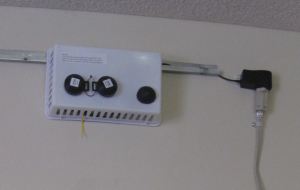Back in July 2014, we told you about an innovative new research program that TAF was launching to study the impacts of various building retrofit measures on both energy consumption and indoor environmental quality (IEQ). Research shows that the health and wellness benefits of energy retrofits can be up to triple the value of the energy savings, and jurisdictions that ignore these benefits underinvest in energy efficiency.
We’ve been busy developing and implementing the IEQ monitoring program over the past eight months with the help of many project partners, including Toronto Community Housing (TCH), the University of Toronto and Health Canada, just to name a few. The scale and breadth of this study is not something that has been done before in the Toronto multi-unit residential sector and will provide a wealth of data about the IEQ in these buildings.
The IEQ monitoring program consists of two main components: a survey of the occupants and in-suite monitoring. With the help of the Environics Research Group, we surveyed the residents in 180 suites across seven TCH apartment buildings. We were interested in learning about how comfortable residents are and how some of their basic activities may influence the IEQ in their suites. Residents were asked questions such as whether they felt too hot or too cold, whether they experience drafts and how often they clean and cook in their suites. Stay tuned for the preliminary results of the survey later this spring!

The in-suite monitoring is accomplished by installing packages of sensors in suites. These wall-mounted sensor packages will monitor things like temperature, humidity and concentrations of carbon dioxide and radon over the next year or two. Shorter-term monitoring of formaldehyde and particulate matter will also take place. The initial installation of these packages, in over 70 suites in the seven participating TCH buildings, has just been completed. This was no small feat – well over 200 person-hours have gone into the assembly and installation of these packages. Many thanks to our dedicated volunteers who assisted us with this very important part of the study!
In May 2015, we will gather our first batch of data from each of the buildings so we can start to get a picture of the IEQ in these buildings. Armed with this information, we can start making decisions on how to enhance IEQ in order to improve the quality of life for the residents that call these buildings home.
